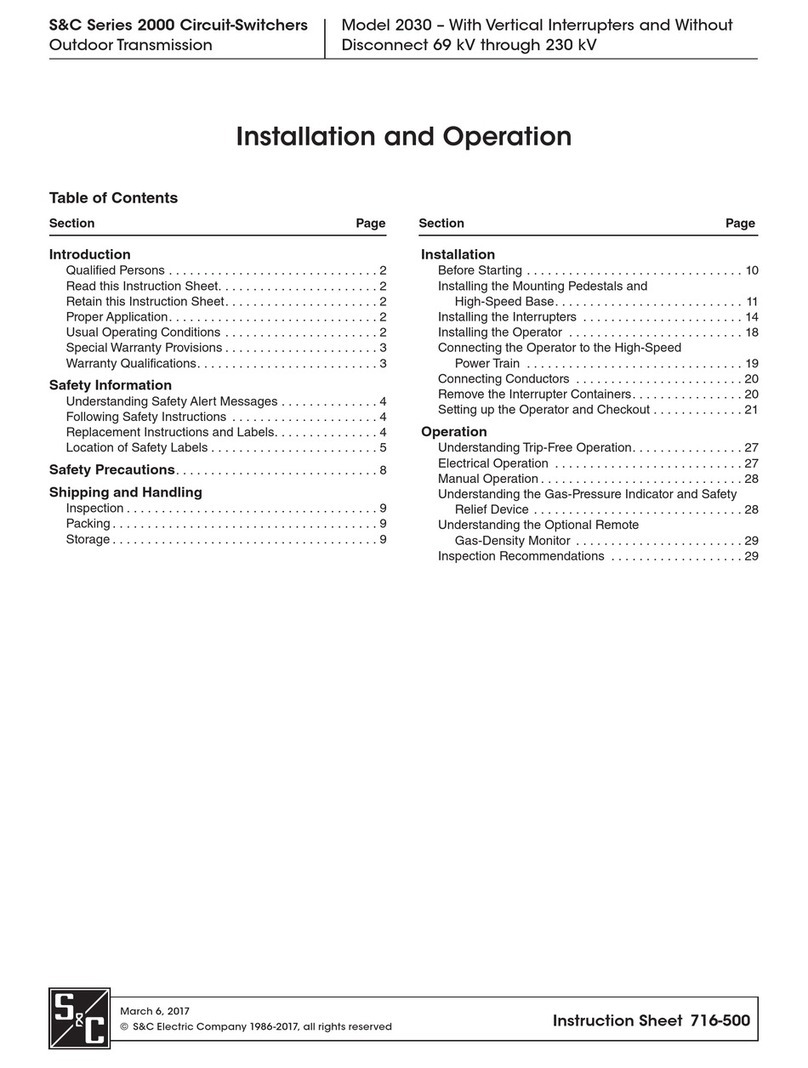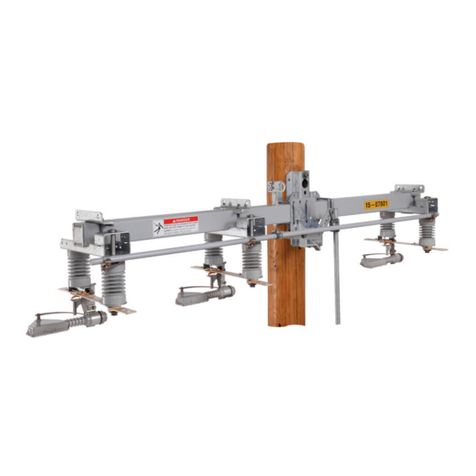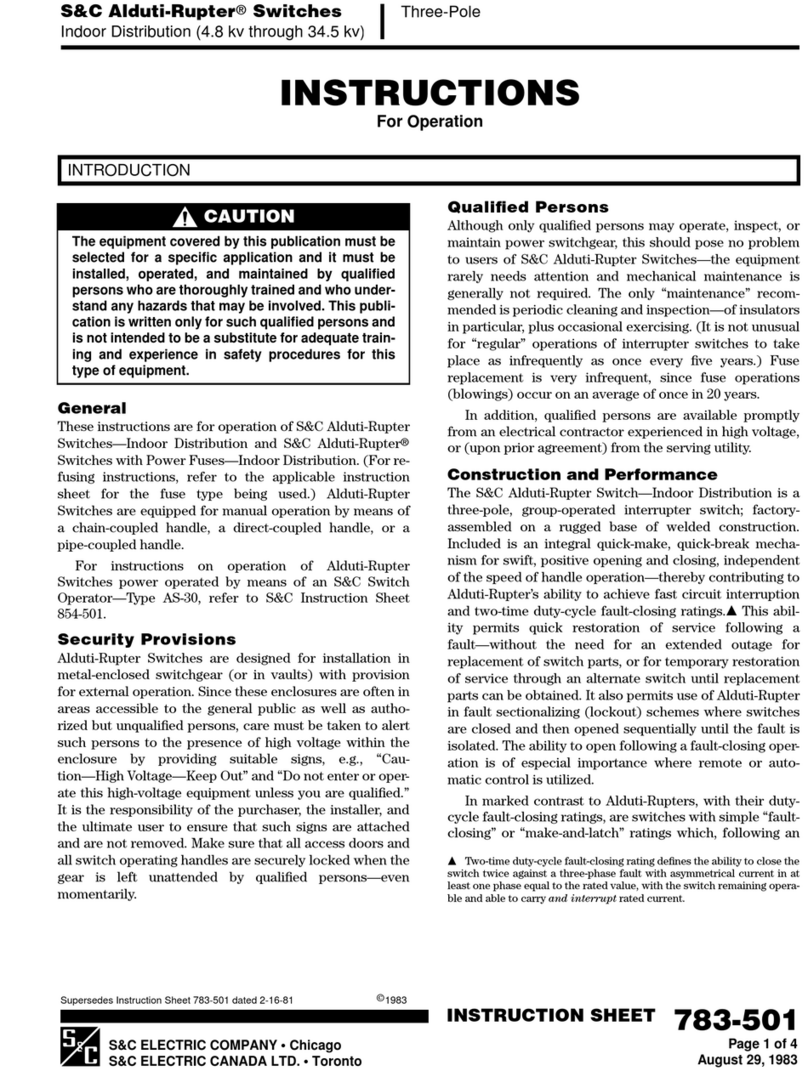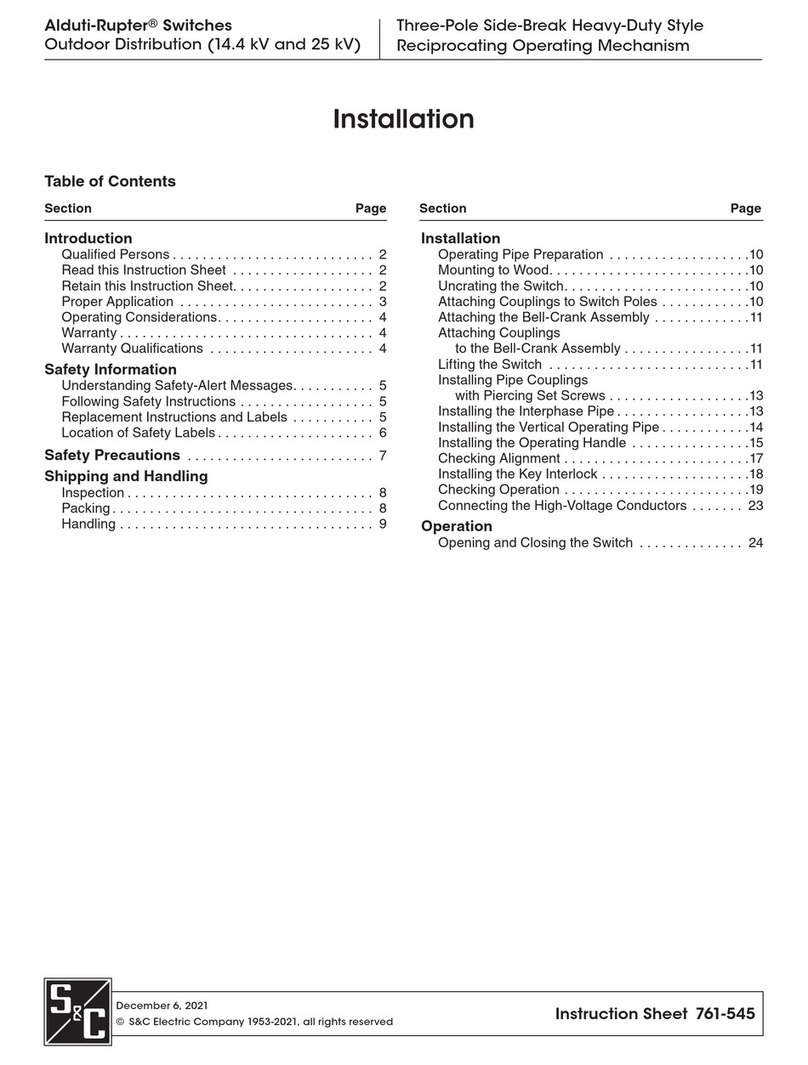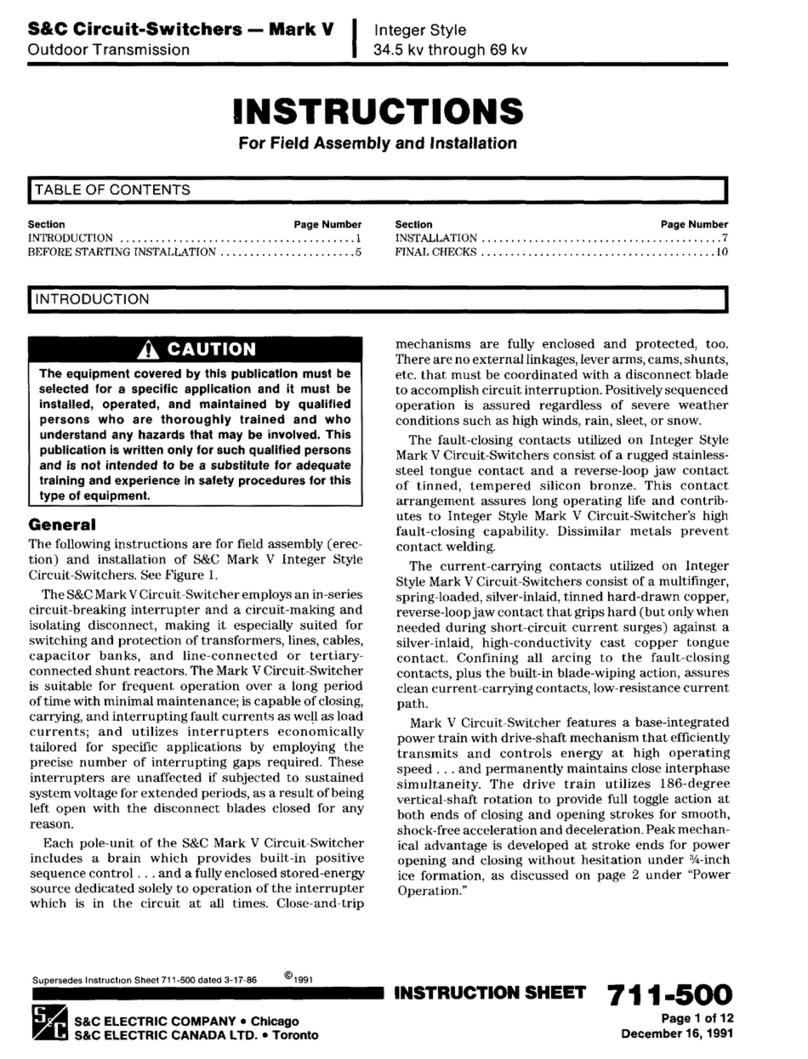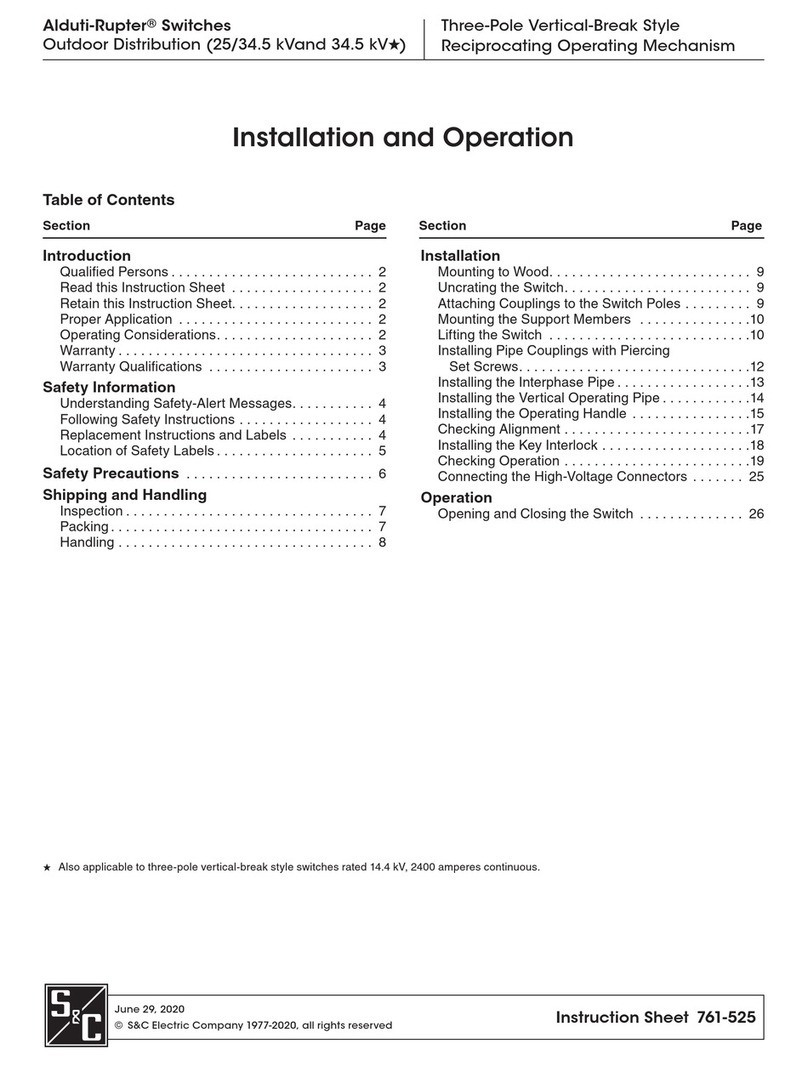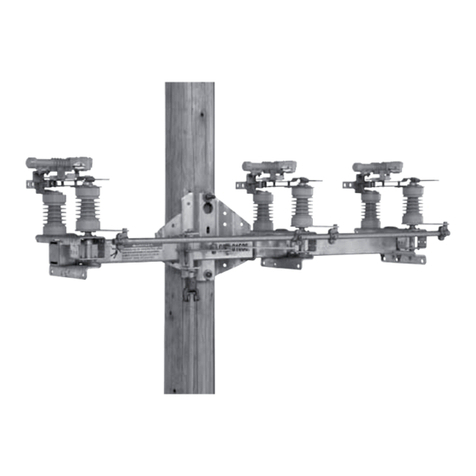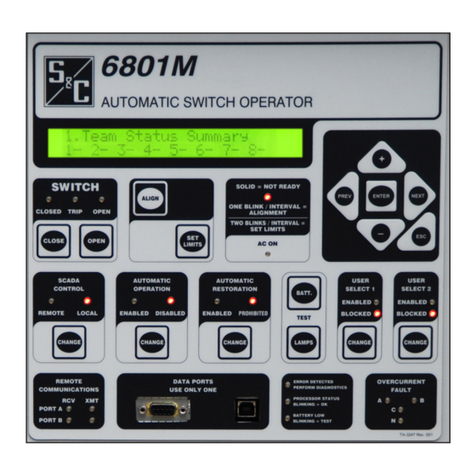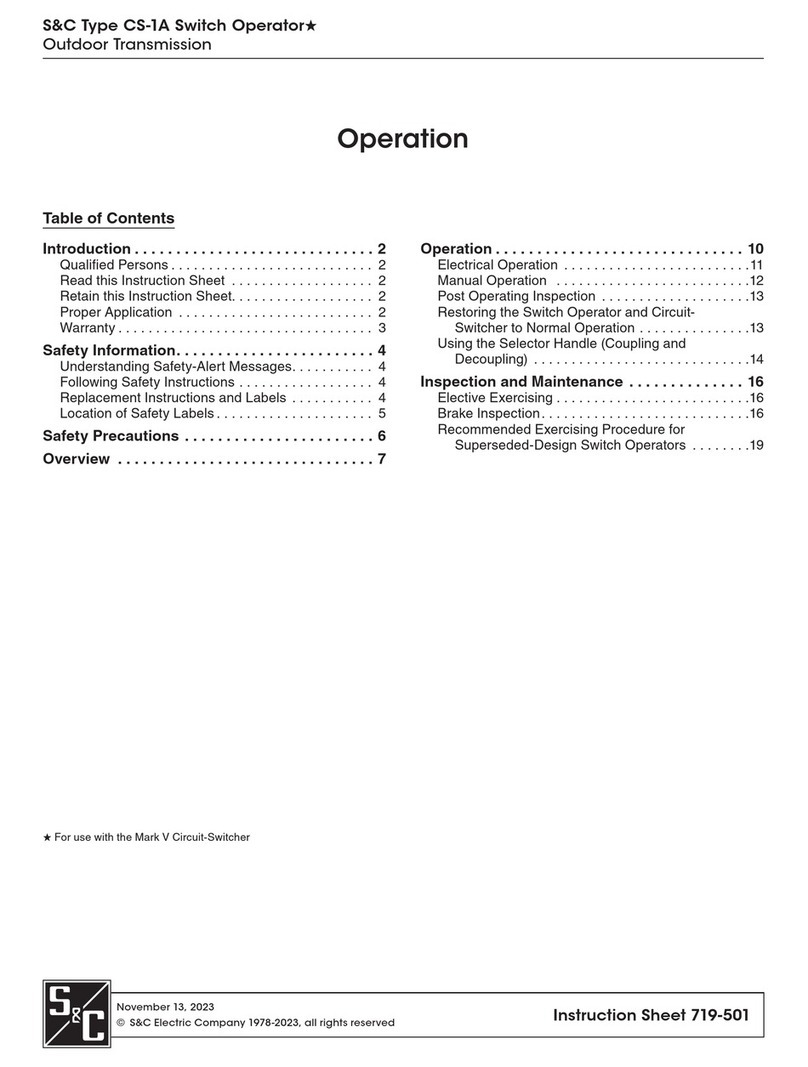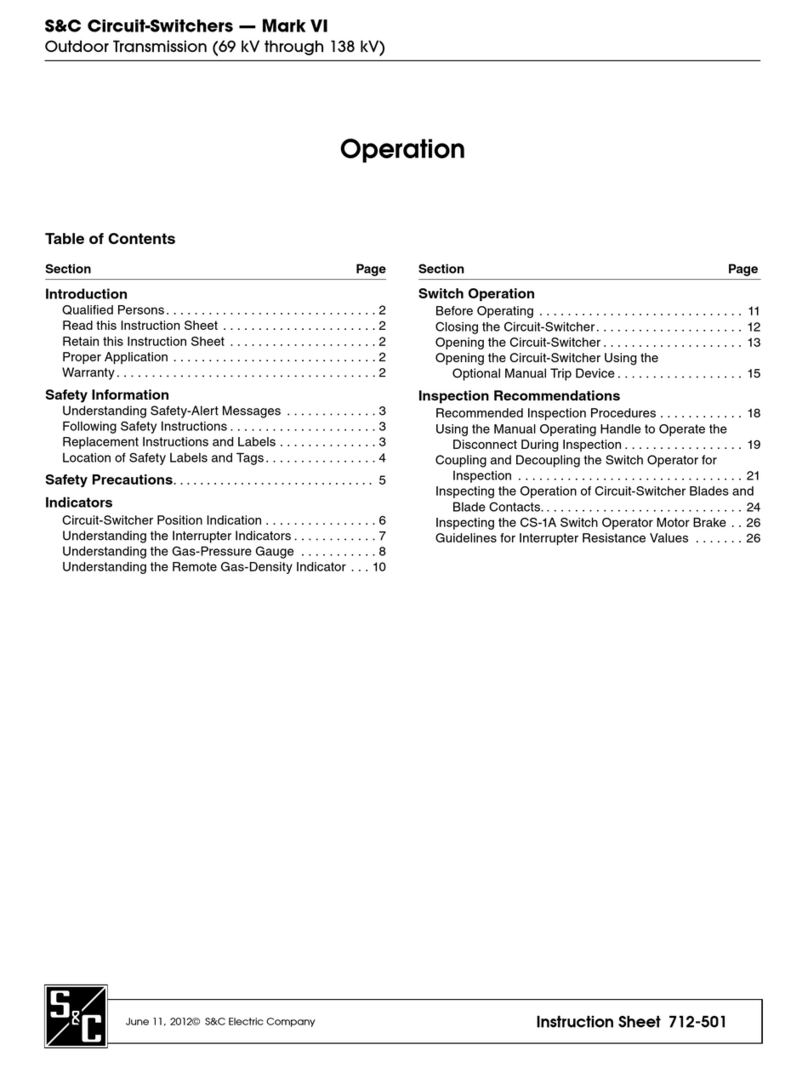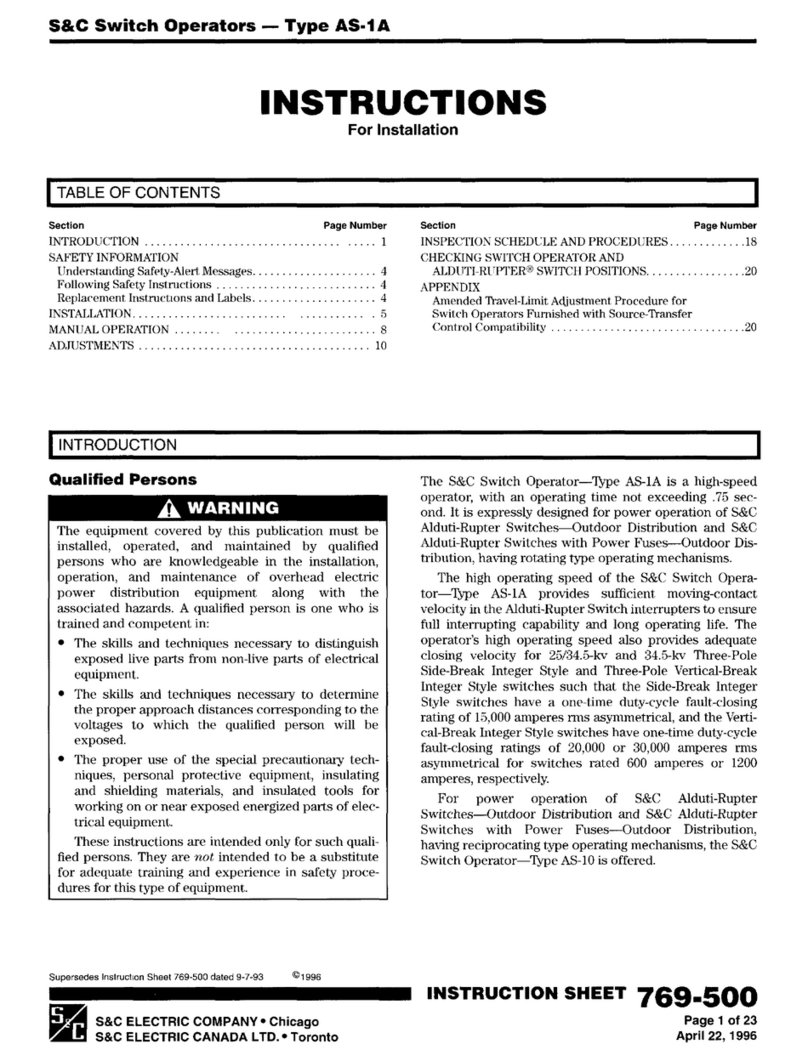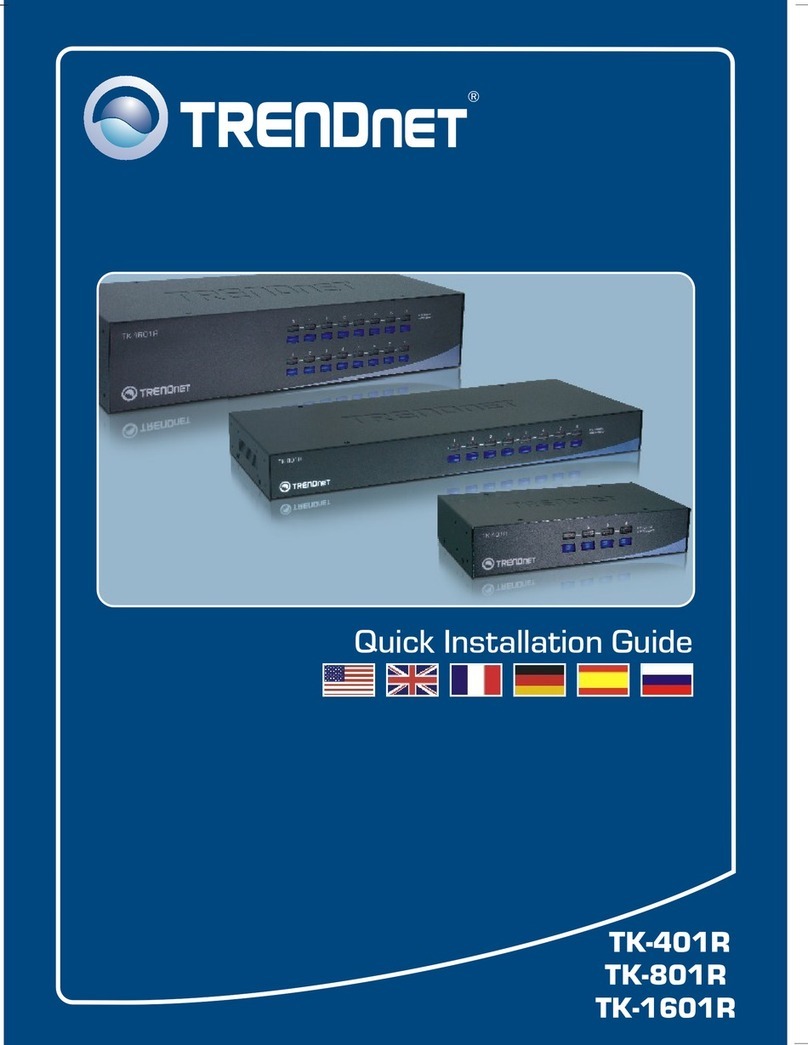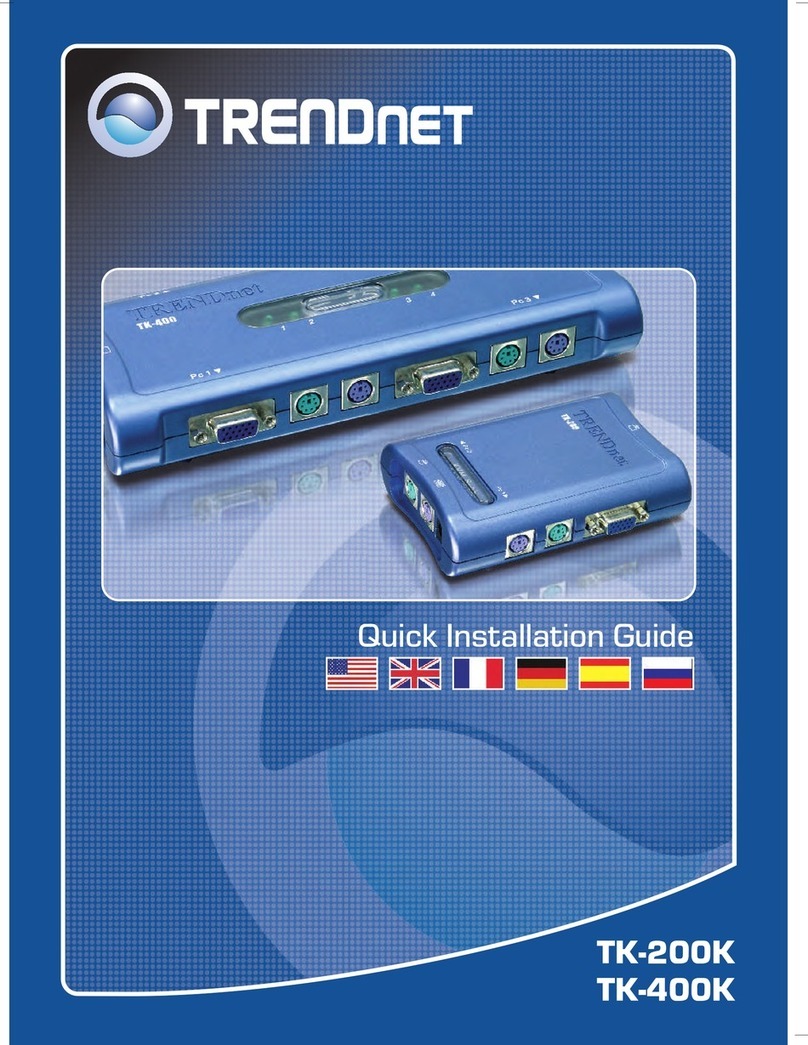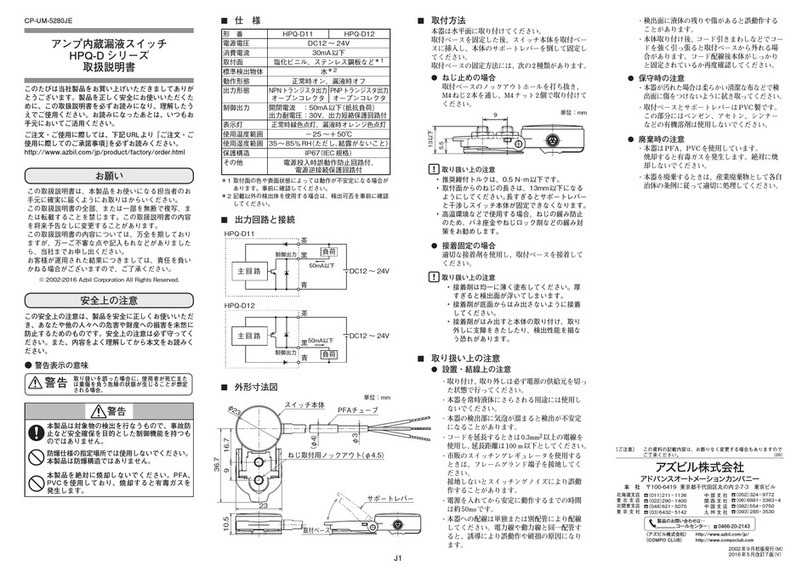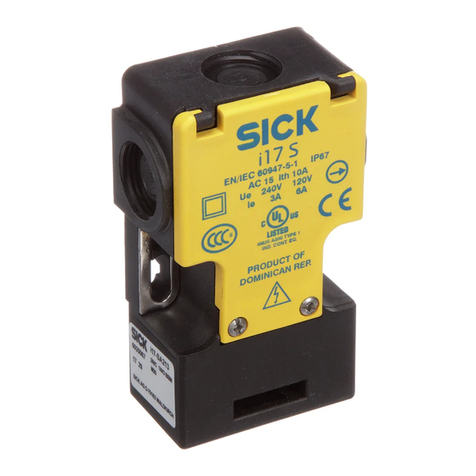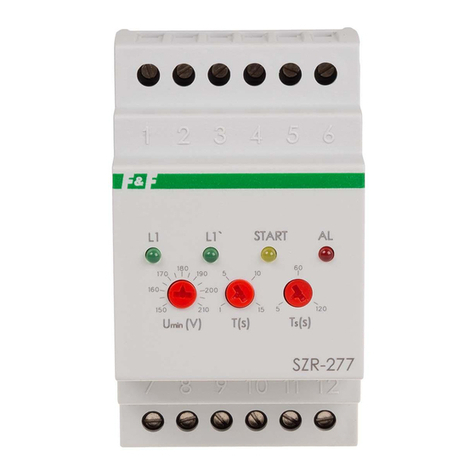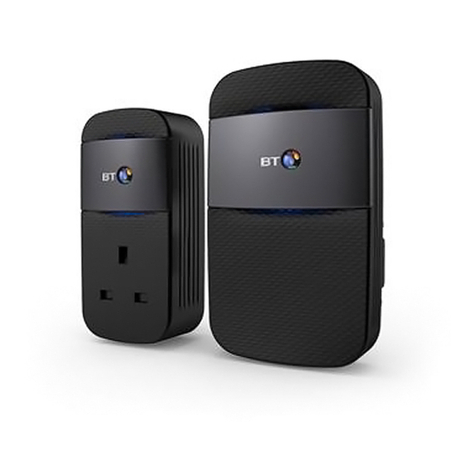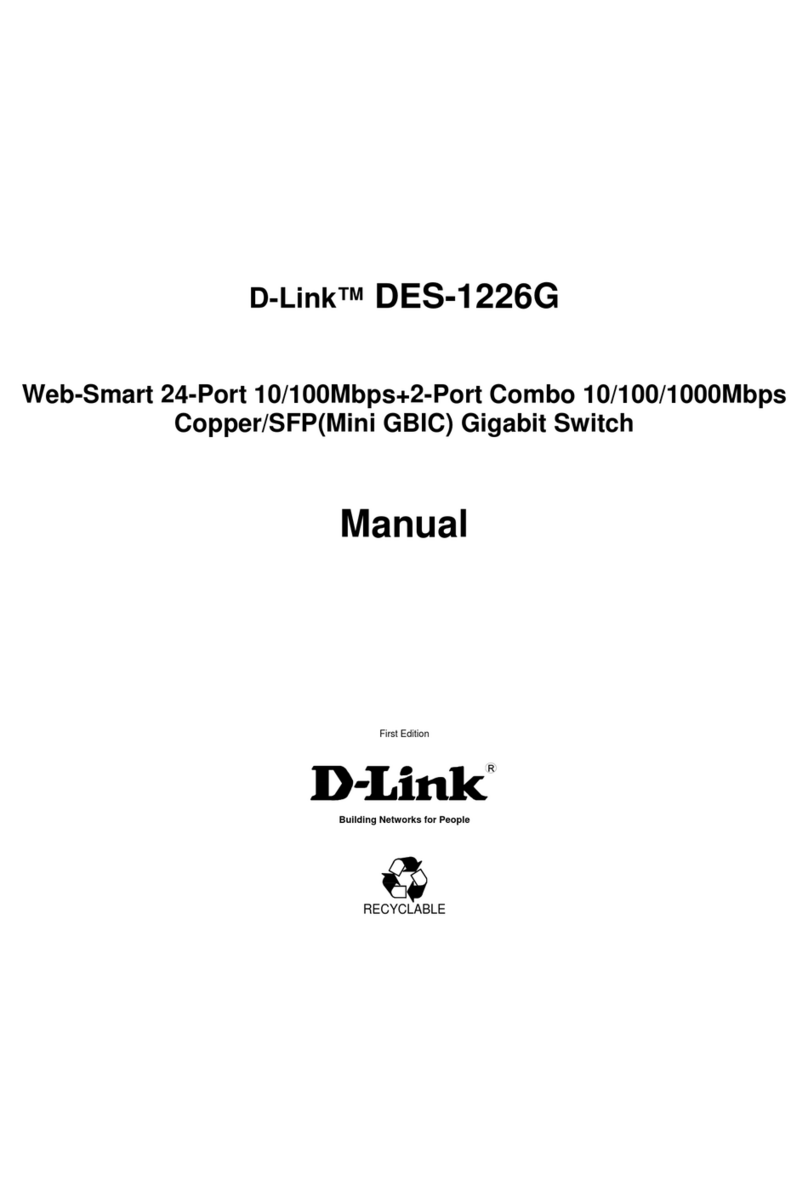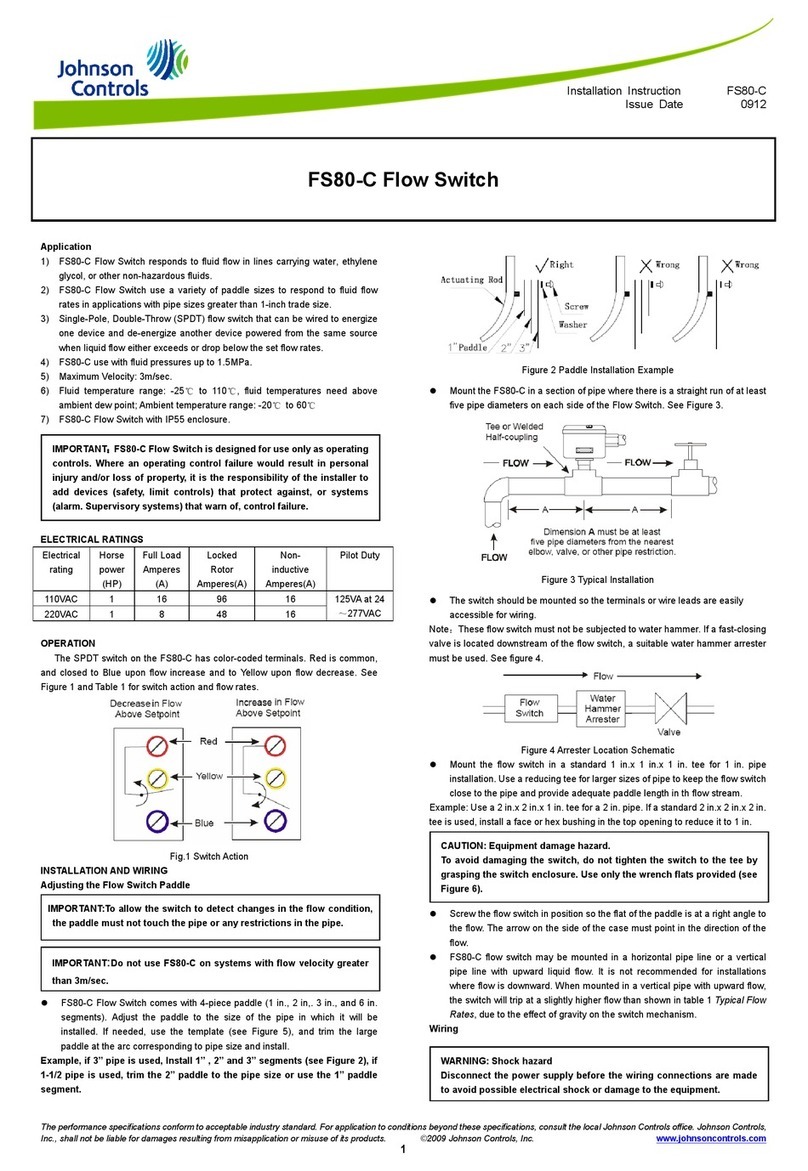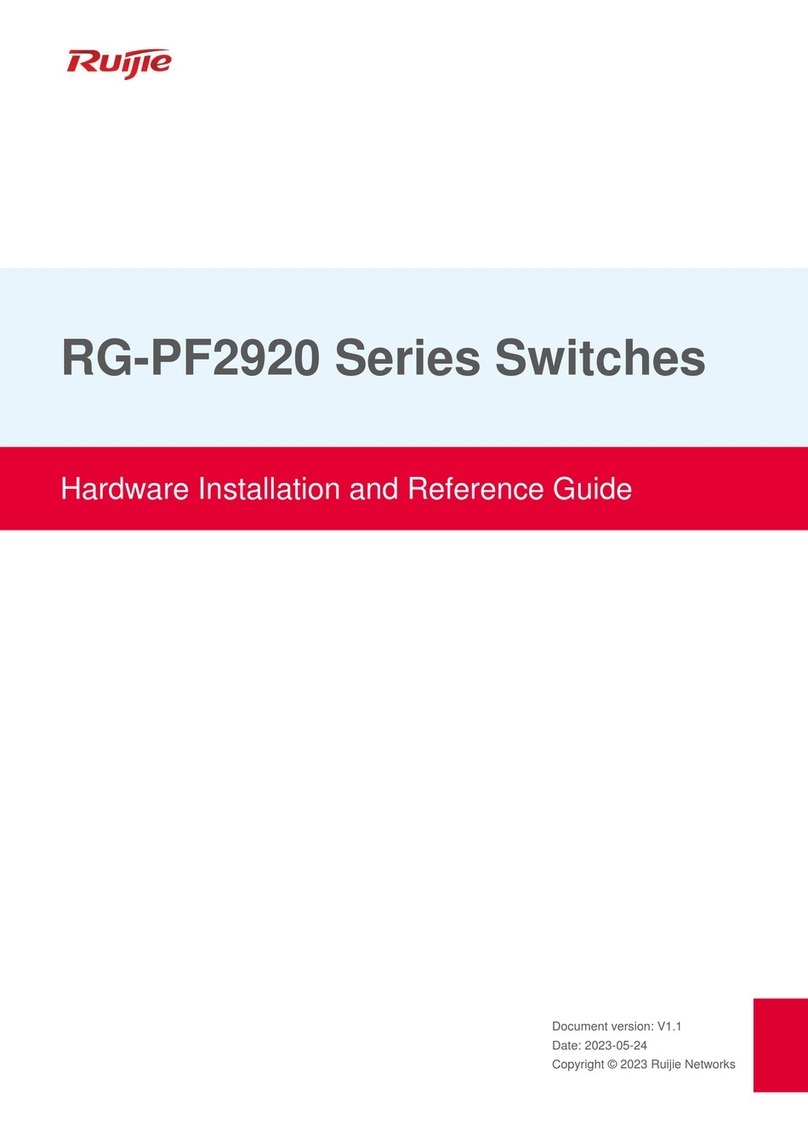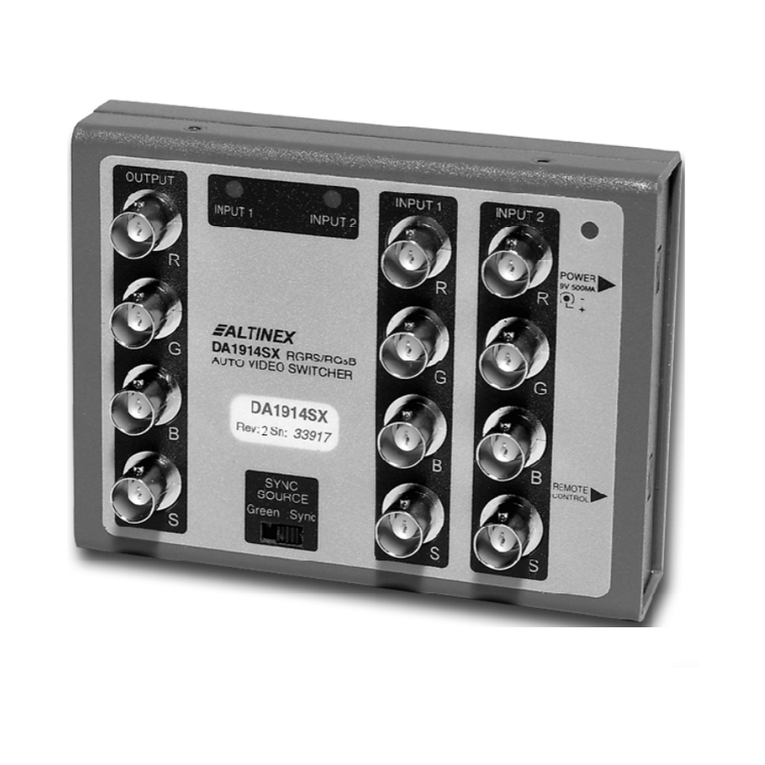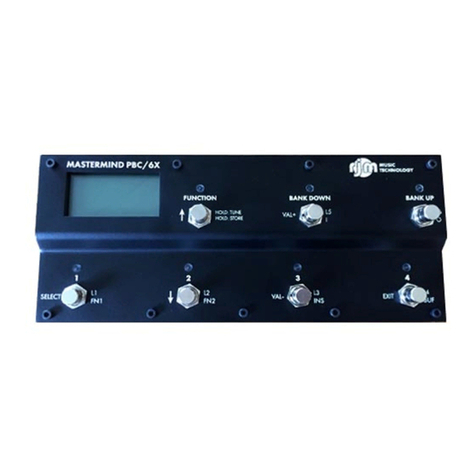
S&C ELECTRIC COMPANY s
716-501
INSTRUCTION SHEET
Page 4 of 26
August 12, 2002
S&C Series 2000 Circuit-Switchers
Model 2010 — With Horizontal Interrupters and
Outdoor Transmission (69 kV through 230 kV) Vertical-Break Power-Operated Disconnect
GENERAL
Interrupters
Series 2000 Circuit-Switchers employ single-gap SF
6
puffer-type interrupters designed to close the circuit in
6 cycles, interrupt the circuit in 6 cycles, and maintain
rated dielectric strength when open. These dual-function
interrupters are factory-filled to full pressure under con-
trolled conditions and then permanently sealed. Field fill-
ing is neither necessary nor possible, thus eliminating the
risk of contaminating the interrupting medium.
Operator
The interrupters are driven by a single stored-energy
mechanism located at ground level in a 48-volt dc, 125-volt
dc, or 115-volt 60-hertz operator furnished with the Cir-
cuit-Switcher. Refer to the “STANDARD FEATURES”
table on page 6, and also Figures 15 and 17. This operator
includes the following features:
•
Trip and close push buttons located inside operator
enclosure.
•
Manual trip lever, for tripping interrupters in the event
control voltage has been lost.
•
Manual charging handle, for opening disconnect after
interrupters have been manually tripped open—in the
event control voltage has been lost.
•
Charged and discharged indicators for stored-energy
mechanism.
•
Non-reset electric operation counter.
•
Eight nonadjustable single-pole double-throw auxil-
iary-switch contacts which follow the interrupters.
•
Weatherproof, dustproof enclosure.
•
Decoupling mechanism which allows decoupling and
locking of disconnect-blade power train in the open
position, permitting operational checkout of interrupt-
ers, stored-energy mechanism, and relaying equipment
without closing the high-voltage circuit.
•
Two individually adjustable auxiliary-switch contacts
which follow the disconnect-blade power train and
operator when coupled, operator only when decou-
pled.
The mechanism in the operator has an instantaneous
trip-free capability: should the Series 2000 Circuit-
Switcher be inadvertently closed into a fault sensed by
user-furnished relaying, the mechanism will trip immedi-
ately. To accomplish trip-free operation, the mechanism
utilizes two spring assemblies: one for closing, one for
opening. Both springs are charged by the operator motor
before the Series 2000 Circuit-Switcher can be closed.
Recharging time after a trip operation is approximately
5 seconds for Circuit-Switchers rated 69 kV through
138 kV, and approximately 10 seconds for Circuit-Switch-
ers rated 161 kV and 230 kV.
Power Train
The operator directly drives the interrupters open and
closed through a simple high-speed power train leading
from the top of the operator, through a horizontal inter-
phase linkage enclosed in a steel-sheathed box-type base,
to reciprocating-action insulated operating rods which
pass through the center of insulating support columns. A
transfer linkage at the top of each insulating support
column converts the vertical reciprocating motion of the
operating rod into horizontal reciprocating motion, to
drive the interrupter.
The operator also drives the disconnect open and
closed through a low-speed power train which rotates the
insulating support columns. The disconnect on models
rated 69 kV through 138 kV is capable of opening and clos-
ing without hesitation under
³⁄₄
-inch ice formation. The
disconnect on models rated 161 kV and 230 kV is capable
of opening without hesitation under
³⁄₄
-inch ice formation
and of closing without hesitation under
¹⁄₂
-inch ice forma-
tion. A decoupling mechanism allows decoupling and
locking of the disconnect-blade power train in the open
position, permitting operational checkout of the interrupt-
ers, the stored-energy mechanism, and the relaying equip-
ment without closing the high-voltage circuit.
Permanently lubricated bearings are used throughout
both the high-speed and low-speed power trains. The insu-
lating support columns are filled with a lubricated dielec-
tric filler which prevents contamination from affecting the
dielectric integrity of the column or the insulated operat-
ing rod. An aerator is utilized at the upper end of each
insulating support column to eliminate water being
pumped-in due to pressure differentials caused by tem-
perature cycling.
